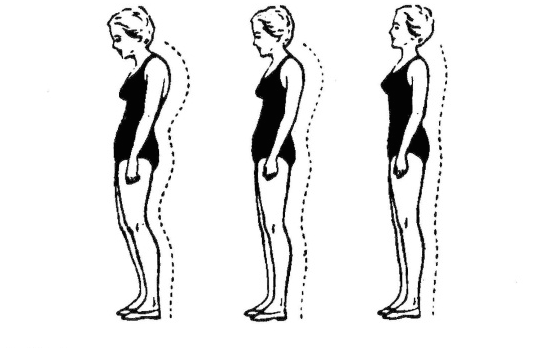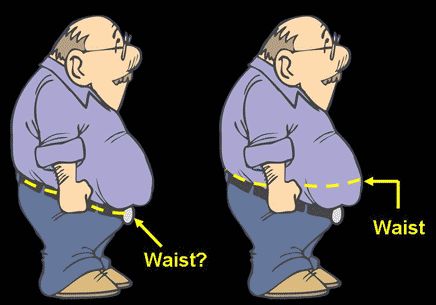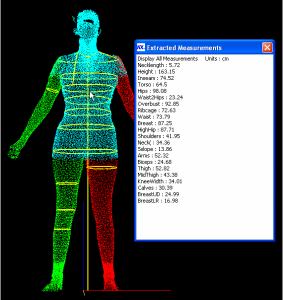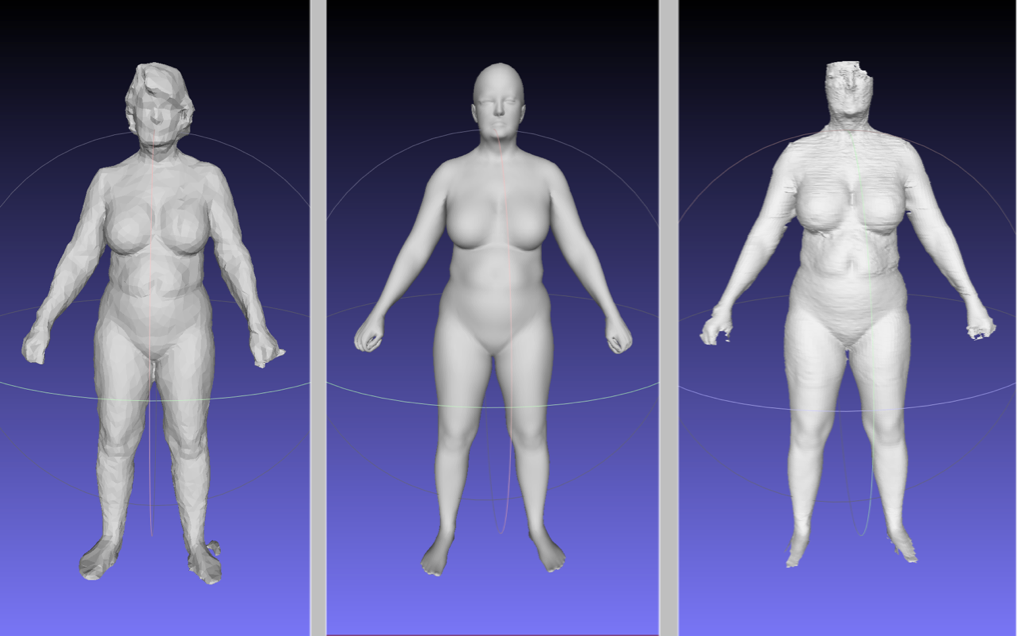
March 24, 2015 How Do Bodies Measure Up?
Even as our world becomes more and more digitized, measurements are still used to quantify the shape and size of the human body. But measurements are human constructs and there isn’t an objective truth for what makes a measurement “accurate.” To further complicate things, no measurement system is 100% reliable – accuracy is usually defined by the measurer, and the measurement process is full of errors. With these difficulties in mind, we’ll dispel the many myths around measurements.
TRUTHS & MYTHS
Myth: Measurements are definite.
Truth: The human body changes in shape and size depending on a person’s posture, stance, and breath. Even the time of day makes a difference since eating, sitting (i.e., spine compression), or water retention can all alter a person’s body over a 24-hour period. To this point, it would be better to think of the body as something that’s constantly in flux, changing shape with time and external factors. Should you ever find yourself orbiting the earth aboard the International Space Station, for example, your height will likely be about 2 inches taller than it is on earth.

Myth: A tailor’s hand measurements are accurate.
Truth:
- The location of where a measurement is taken on the body often varies between tailors and can even vary with a single tailor. For example, one tailor might take a thigh circumference from the middle of a client’s thigh, but another could take it further up on that same person’s leg.
- Other variations can also lead to different measurements from one tailor to the next. These include measurements taken over clothing, the use of an unlevel tape measure when taking circumferences, differing degrees of compression with a measuring tape, or whether a tailor uses the good ol’ “two-fingers under the tape” measuring technique.
- All measuring tapes are not created equal. If a tailor has been using a fabric measuring tape, this tape can stretch over time, distorting the results.

The waist measurement can have many definitions.
Myth: Measurements taken from a 3D body scan are accurate.
Truth:
- Different scanners have different accuracies and thus can produce different outputs. To further complicate things, after a scan is taken, different scan measurement software can output different measurements, both in the actual measurement values and the locations where the measurements were taken on the body.
- Measurements are taken from the rigid surface of the scan, which is analogous to measuring a statue and not a real person. Humans are squishy.
- Body scans can be incomplete or have messy data. Some scanners use “fusion” or “hole-filling” software, which result in a filled-in scan (i.e., an avatar-like body). However, this is only a rough representation of your body and thus can provide inaccurate measurements.

Measurements taken from a scan.

Measurements taken from a scan.
BODY LABS’ MEASUREMENTS ARE DIFFERENT
By measuring a body model and not a scan, we provide outputs that are
Consistent:
- With a body model, we can pose normalize each subject, putting every person into the same pose regardless of how they were standing during the scan, while maintaining original body shape. This eliminates any measurement errors produced by slouching or legs placed too far apart.
- Measurements are also defined in the same places, according to their anthropometric definitions, across any body. In other words, the maximum thigh girth may be located in a slightly different place from one person to the next, but Body Labs’ tech accounts for these variations and thus can provide that precise measurement on any body.
Universal: No matter which scanner is used, a body model will have the same measurements, taken from the same places.
Watertight: Even if a scan contains noise or holes, the 3D body model is highly accurate without any missing data thanks to our statistical model learned from real-world data that is based on scans of thousands of people in thousands of poses.
Comprehensive: We measure the “dynamic body,” taking variations such as soft tissue deformation and breathing into account.*

Measurements taken from a body model.
WHAT’S NEXT?
While measurements are one way to know your body’s shape, they don’t fully account for the body’s geometry. But now, with body models, we are able to move beyond the measuring tape and instead think of the human body in terms of shape, an idea we’ll explore more in posts to come. After all, you are unique and so is your shape!
*For further information on how a person’s shape can change throughout the breathing cycle, learn more here.